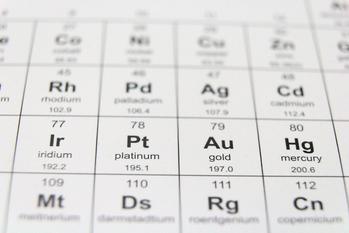How to Get the Maximum Benefit Out of Your Process Filtration: Part 3, Saving Your Catalyst

Here’s a question for you. How much does your company spend each year on catalyst? Not sure? Here’s a better question: Do you know how much money you’re throwing away in catalyst each year because of poor filtration retention? Well, at upwards of $2,500 an ounce for some catalysts, the costs can quickly mount. We understand – because we hear it from plant managers and engineers every day across a variety of industries – from food and ingredient manufacturers to specialty chemical and dye companies, to API plants, you’re not always focused on your catalyst, as you are more focused on the end-product. But, in the world of chemical, hydro-carbon, food, and pharmaceutical processing, catalyst IS a product.
Antiquated filter technologies only capture, at best, 80-90% of your catalyst because they fail at filtering down to sub-micron levels. Natural attrition occurs as part of a catalyst-based reaction and originally large particles break apart into small, and often, submicron particles. You could add in a downstream fines filter to help capture these, but that adds to cost, complexity, waste, and maintenance.
What if I told you with the right technology you can capture 99% or more of your precious metal catalyst and do it in a single pass? Sounds interesting, doesn’t it? Let’s look at a quick example.
Why high-performance catalyst filtration systems pay for themselves
Let’s say you’re a Plant Engineer of a small chemical plant spending about $1,000,000 annually on precious metal catalyst using antiquated filtration technology. What return could you realistically expect by upgrading to an advanced system that can capture sub-micron particles?
- $1,000,000 in catalyst costs x 85% particle capture (average) of antiquated system = $850,000 catalyst captured annually for recycling or reclamation, $150,000 of catalyst “lost” to product lines or product itself
- $1,000,000 in catalyst costs x 99% particle capture of high-performance system = $990,000 catalyst captured annually for recycling or reclamation, only $10,000 “lost”
- Take the difference: $990,000 – $850,000 = $140,000 annual savings
Even in this conservative example of a small chemical plant, the Plant Engineer would achieve a 6 figure annual cost savings and become the new best friend of the finance and operations teams. This example doesn’t even include the additional benefits you receive from closed-loop, single pass filtration such as safety and throughput. So next time you’re comparing a 5-figure antiquated filtration system to a 6-figure closed-loop system, make sure to look beyond the face value of those systems. If I told you that you would make back your money in 1.5 years and save $1.4 million over the next decade, would you take it?
Of course, you would.
Why porous metal is better at catalyst filtration
The simply answer to this is barrier filtration. A properly designed porous metal filtration system, like the Mott HyPulse® LSI for liquid processes, uses barrier filtration as its primary particle capture method. Porous media is intentionally chosen to be nominally smaller than the smallest expected particle. This does two things. First, it obviously means high particle retention and thus excellent product quality and catalyst capture. More subtly, however, it helps keep all solids on the surface of the media to establish an effective filter cake. This cake, comprised of solid particles from the feed stream, enhances performance, resulting in improved clarity. More importantly, since the cake and solids sit on the surface of the media rather than within the depths of the media, it can be efficiently backwashed or backpulsed off the media. This allows for downstream handling, or in the case of precious metal catalyst recovery, the ability to reuse or reclaim the catalyst. With a properly designed liquid filter, all of this can be done in a single pass, with a fully automated online clean in place system.
So how do you get started?
As I’ve been preaching in this article series from day 1, the answer is lab testing then design based on actual performance data. You don’t have to pull the trigger on a 6-figure filtration system, wait months for it to be fabricated, install it into your process, and then run it for a month to see what results you would get. At Mott, we use a lab test called ‘Filter Feasibility Testing’ where you send us samples of your dirty feed stream and the filtrate from your current filtration method (if applicable). We then compare what your filtration is achieving today to what you would achieve with a properly designed porous metal filtration system. It’s a comprehensive test that is indicative of the results you should expect on scale-up. Is a $2,500 test worth knowing whether you could achieve 6-figures or more in costs savings on your precious metal catalysts each year?
Of course, it is.
Next Steps…
If you think you might be leaving money on the table by not efficienctly reclaiming or recycling your catalyst, I’d love to talk. You can count on me to listen to your process and provide advice tailored to your unique situation. Feel free to send me an email or connect with me on LinkedIn and if you have questions.
In the meantime, I mentioned Mott’s comprehensive lab testing earlier. It’s a very low cost, low commitment way to determine if you’re getting the most out of your process filtration. Check out our video on filter feasibility testing to learn more about the process.
Read Part 4: How to Get the Maximum Benefit Out of Your Process Filtration: Part 4, Saving Your Throughput Revenue